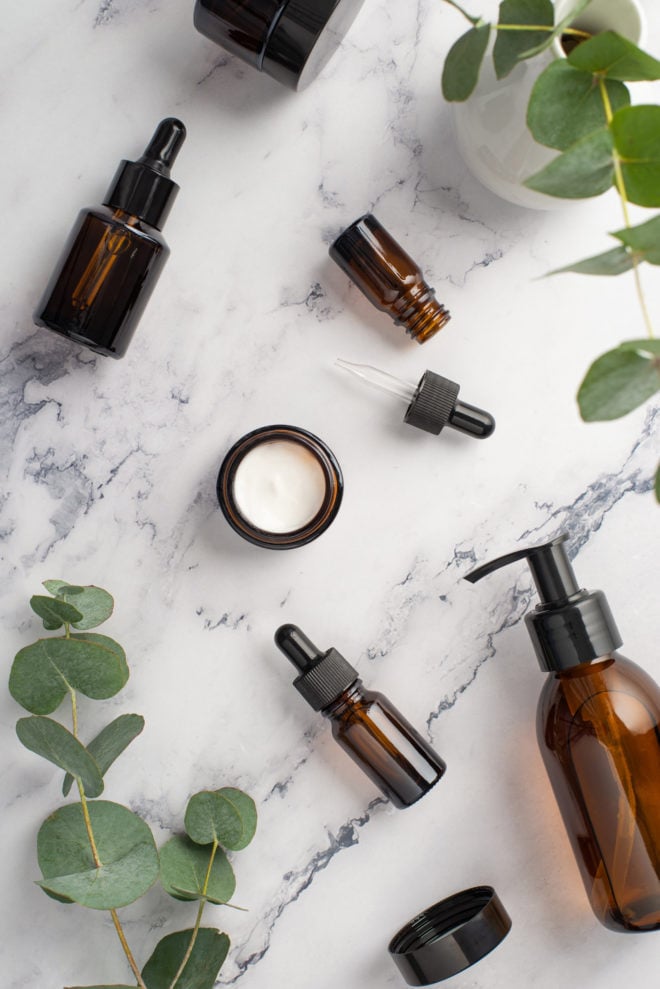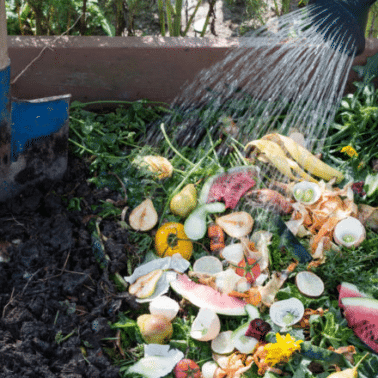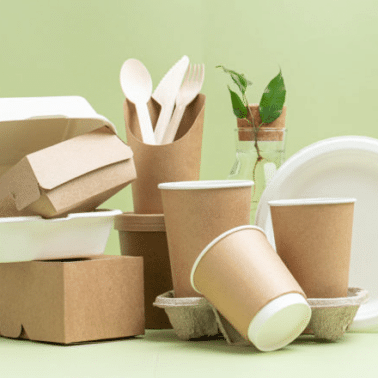When I took marketing in college my intro class had a lot of gems like “red and yellow are colors well-suited to fast-food restaurants”, and probably some other useful stuff I definitely didn’t commit to memory. It was an introduction class after all. We gotta give the marketers of today some credit because they’ve upped the game! They’re spinning consumer interests and values into label claims and taglines that we can’t help but fall for over and over again. You may have heard of the term greenwashing as you’re searching for certain products, and it can be confusing to find which companies are walking the walk, and which ones are just talking the talk.

What is greenwashing?
Greenwashing is a little lamb on a green pasture with the words “natural” and “plant-based” taking up prime real estate on the front of baby bath soap. Words, images, and even earthy colors that help us believe that a certain product is “earth-friendly” or “green”, lead us to purchase that product thinking that they are planet-focused and have ingredients that are safe and maybe even “good for you”. Products will use words like “healing” or “soothing” and mention a natural ingredient like aloe vera.
Unfortunately, currently in the US, label claims don’t necessarily have to be backed up. “Made with xyz ingredient” CAN be true, and when you turn the product around to check the full ingredient list, turns out there is that helpful ingredient in there, but there’s also a bunch of junk. Organic labeling does have standards that are regulated, but otherwise, the buzzwords like natural, sustainable, and eco-friendly don’t have a standard definition by the industry and the FDA doesn’t regulate the use of them on products. Brands know that consumer values are changing and in an effort to align with how the customer views themselves, they’re painting the picture we want to see in their packaging and language.
Why does greenwashing happen?
Imagine a new parent holding a baby in the “natural” baby section at the store. They look at the options for lotion, baby wipes, baby shampoo and see lots of soft greens with all of these words speaking to them from each new set they see. This one is hypoallergenic! That one is biodegradable! This other one is “made with organic ingredients” (70% organic ingredients). Without a deep understanding of the scientific names for ingredients on the back of the bottles, how do they make a decision between the many options they see? The same way so many of us do when we’re choosing everything from a new book to a new toothbrush. The box, the label, the colors, the words we like, make us feel like this product is for me. Companies making these types of products understand that about their consumers. We’re too busy to flip over the package, and even if we do, if we’re wowed enough by the “recyclable” “non-toxic” words on the front, and the calming colors, the long ingredients list might be a casualty of our human quick decision making and get a skim at best.
At this point, you might be thinking, this is tricky! I don’t like being tricked! Me either. Buying a product with “recyclable” on the label, only to find out, the material actually isn’t widely recycled and not accepted where you live is disappointing and frankly makes me a little mad. If it’s truly not able to be recycled, then it goes to the landfill, which is the opposite of that eco-friendly label you were reading in that natural baby aisle. You might also ask, WHY are companies doing this then? Leading us to believe that a product is “all-natural” when it’s really comprised of many synthetic ingredients along with the natural, and that it’s “environmentally-friendly” when really the packaging is made from virgin plastic and not recyclable where you live?
Double answer here is that 1) they know that consumers want more “safe” “clean” “eco-friendly” (though we don’t have a consensus on what any of those words mean) products and 2) profit. Right now with little to no regulation over the terms used and the ingredients inside the product and packaging, brands can sell based on what they think we want to see.
How to Spot Greenwashing
Let’s talk about how to spot greenwashing in the wild. There are many certifications you can easily check for that will tell you if this company is making claims, or having them verified by a third party.
- B Corporation – This little B mark on the label means this company is doing good for people and planet and is evaluated on a rigorous scale annually to check on progress! This gets a pretty heavy weight for me when I’m shopping.
- FSC certified – products come from responsibly managed forests
- Leaping Bunny – absolutely no testing on animals anywhere in the supply line
- USDA Organic – has to be 100% organic ingredients(has the seal), “organic” is 95% organic, and “made with organic ingredients” is 70% organic. Neither of the last two are allowed to have the USDA organic seal.
- Climate Neutral Certified – these companies spend a fraction of their revenues to eliminate and/or offset carbon emissions. They have their actual output published as well as plans to improve their overall environmental impact.
- Home compostable – This one is big because there are to-go containers labeled with “compostable” and when you look closely, it says “in a commercial composting facility”. My city doesn’t have one of those, does yours? If not, this container is still landfill-bound since it’s probably made with bioplastics that aren’t recyclable.
- Recycle info – Glass, aluminum, and paper are widely accepted at recycling centers. Types of plastic aren’t always accepted everywhere. The most accepted numbers are #1 and #2, so check your local facility if you see #5,6,7 on the bottom!
It’s a jungle out there y’all! Here’s what you can do next time you’re shopping! Look for the above certifications. Google the company and go to the FAQ page. If they’re really planting trees, have a giveback program to women’s education in another country, test their ingredients for safety, and have a green factory with plans to reduce carbon output, they will be dang proud of it and have the pictures and literature to back it up. If it’s not there, it’s not happening.
What to do if a brand you like doesn’t match up to your standards? Tell them. Seriously. We have more power as consumers than we think. Want your favorite dish soap company to disclose their fragrance? TELL THEM. Want that same company to integrate post-consumer recycled plastic? Go to the comment box on their site and let them know! Of course, we can move our purchasing power to another brand that is doing the things we align with, BUT/AND we can also ask more of the companies we’ve bought from. If my favorite chocolate brand doesn’t know their customers WANT home compostable packaging on their products, how can they make the move to that change? We know better, now let’s demand better from the big brands we’re bringing into our home.
Just for You
Sustainability Articles
Want to broaden your knowledge on sustainability?












Great article! Very educational & actionable. Thank you!
We are so happy to hear that! Thank you for sharing with us. -Team F&F
Thank you for this helpful information! It can be hard to navigate.
So glad you found it helpful, Becca! -Team F&F